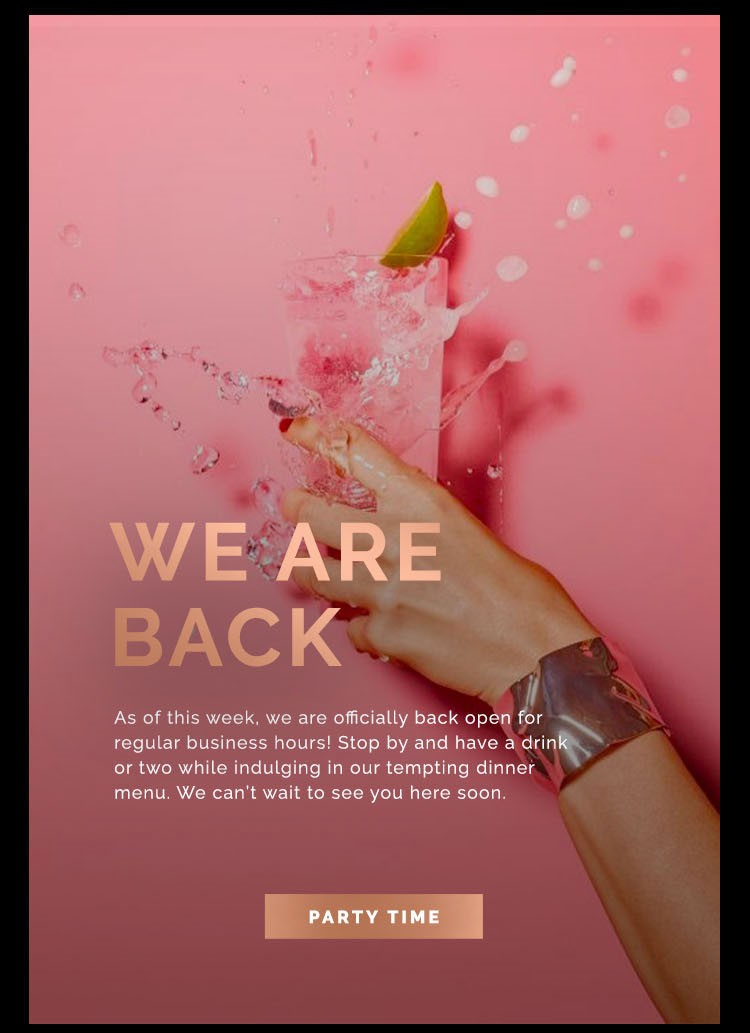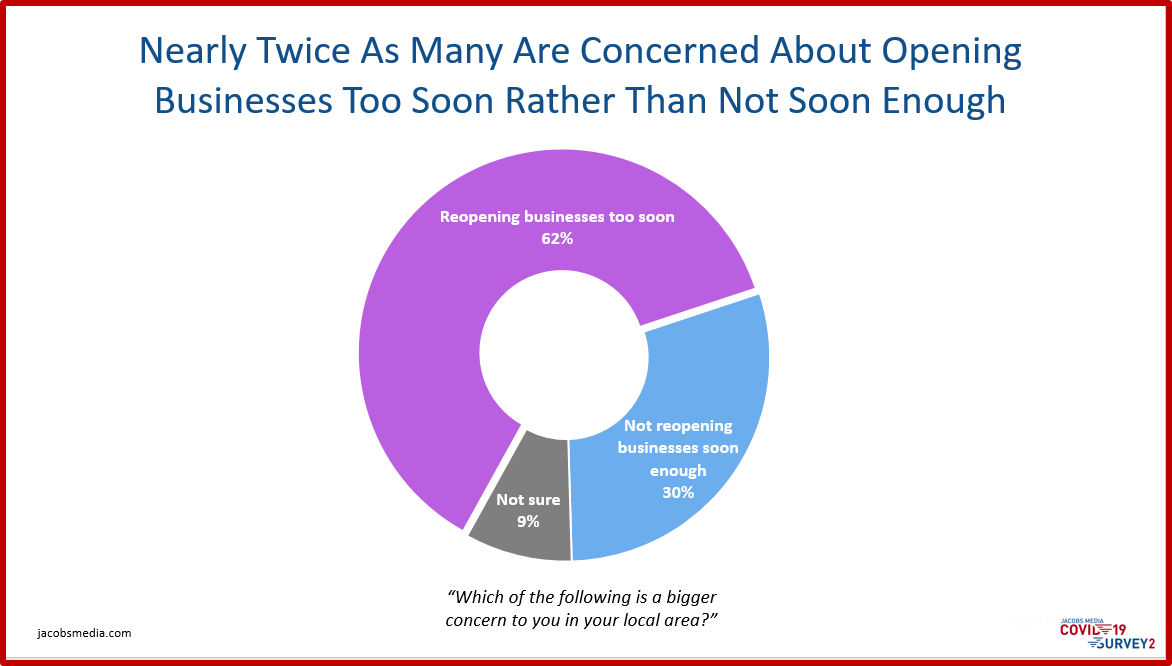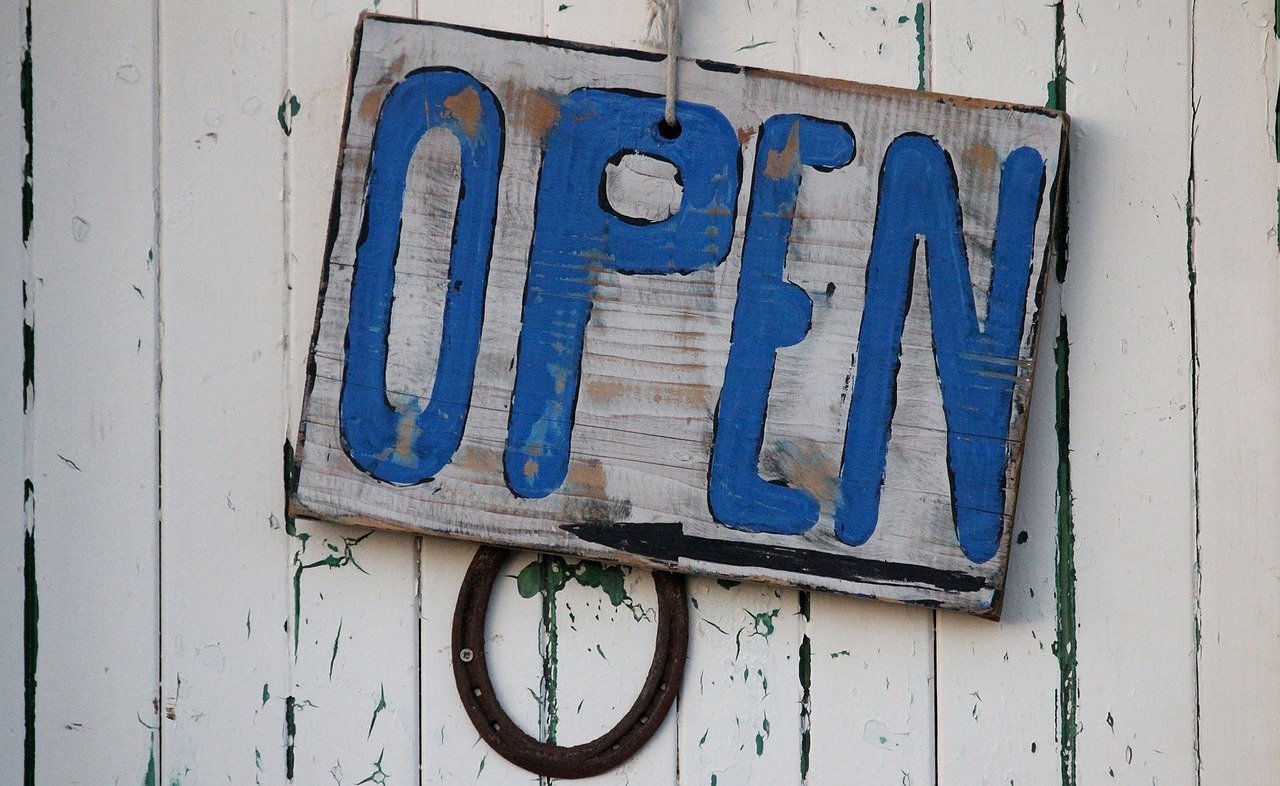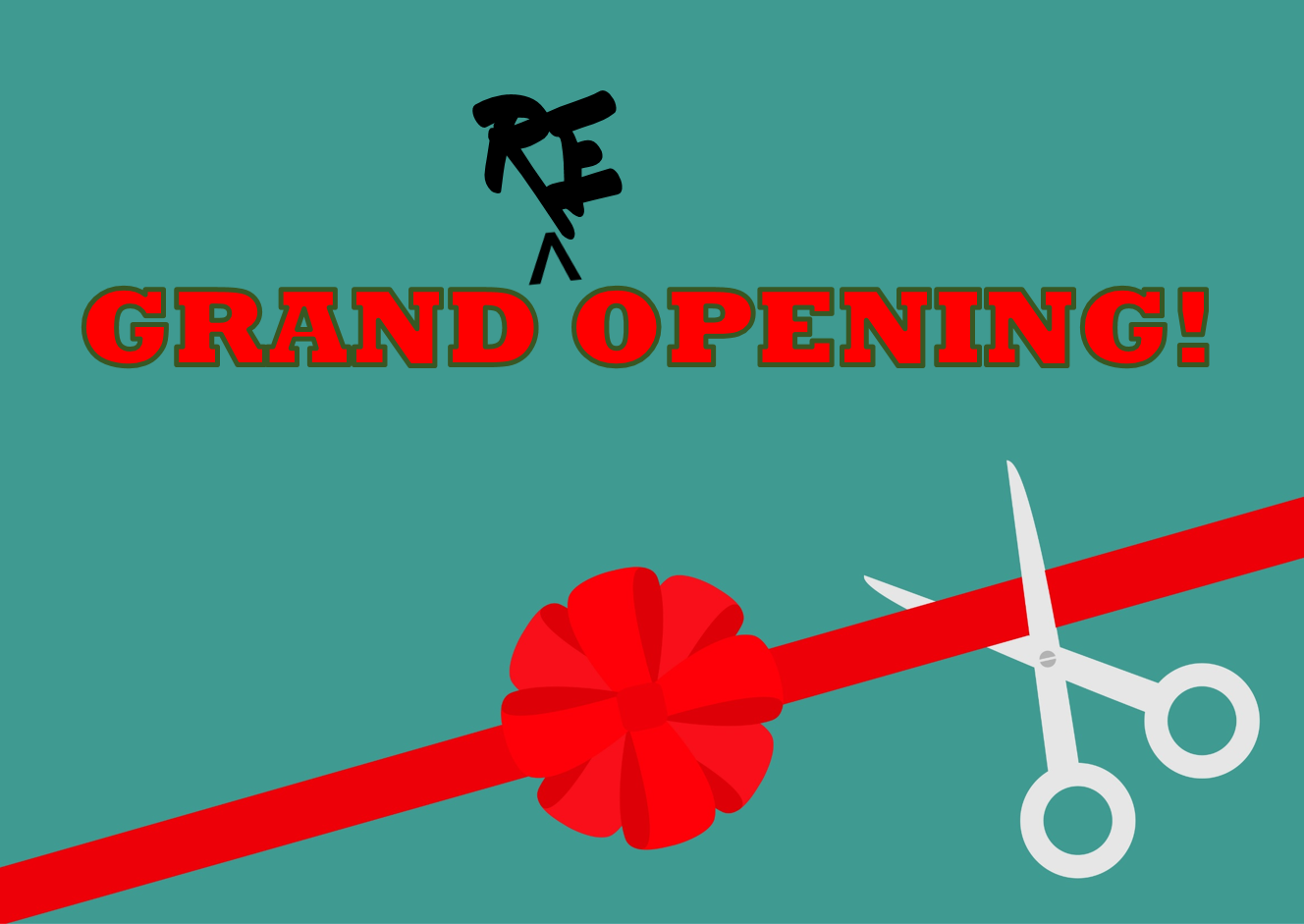
Yesterday, I received this email from Salt 7, a trendy restaurant in Delray Beach, Florida, where I live and work part of the year. I’m not sure why I gave them my email address – I only recall dining there one time. But like many of the trendy eateries that dot Atlantic Avenue, they’re understandably excited about re-opening after several weeks of either being dark or limited to carry-out/delivery. The graphic on the top of this post is what you see when you open the email.
It will be interesting to see how the “re-opening” plays out, not only in Florida, but in the other 49 states, all of which are now in various stages of relaxing their restrictions. For broadcast radio and other marketing platforms, there’s a lot of “bated breath” taking place as we all wait and see just how excited consumers are about returning to sit-down restaurants, as well as taking part in so many other activities we used to consider “normal.”
One of the striking realities of this pandemic is how “un-unified” policies have been, whether we’re talking about actions state governors have been taking – or not taking – or the standards businesses will be using as they open for the first time in weeks. How will they change their operations, their hygiene regimen, their social distancing, and face mask requirements? Suffice it to say, there’s a lot of pressure on businesses to do the right thing, and handle their “new normal” operations in ways that inspire consumer confidence.
Many people want to know these details because they will obviously vary – in some cases, greatly – from restaurant to restaurant, gym to gym, and nail salon to nail salon. It’s noteworthy Salt 7’s exuberant alert contained no information about safety and hygiene. They’re hoping their clientele falls right back into their old patterns. As the email says, it’s “party time.”
We’ll see about that. That’s because many consumers – wherever they are – are wary about exactly what life will be like one week, one month, or even one year from now. Will there be “relapses” – that is, spikes in infections as a result of these “re-openings,” will consumers adhere to the COVID-19 restrictions, and what life will be like in this next phase of the pandemic?
Obviously, the answers to these questions will go a long way toward determining which businesses come back fastest, and to what degree will they want to market their comebacks. For radio – and other advertising media – that is the question.
None of us knows what’s around this critically important corner, but I can tell you we learned a lot last week from our second COVID-19 “flash survey,” conducted May 12-14. It was well-timed, being delivered starting today, just ahead of the holiday weekend. And every state will be experimenting – in one way or another – with the “re-opening.” If there’s a “second inning” of the coronavirus crisis, it’s starting right now.
And a top concern about shopping and activities as we head into a holiday weekend is this idea of businesses opening too soon. While many, many retailers will be opening, that doesn’t mean consumers are ready to return to their carefree old ways.
Case in point: We asked our 16,000+ respondents whether they were more concerned about businesses opening too soon – or too late.

Concerning, right?
In the same questionnaire, we listed 25 wide-ranging activities in an effort to gauge both interest level and perceived degree of risk. We’re talking about everything from going to the beach, stopping by a casino, hanging out at a bar, or attending religious services. And I’m predicting this guidance from the audience is both fascinating and beneficial. That’s because it frames what radio sales teams will be tasked with during this next phase of the coronavirus.
An entirely new yardstick of success will be in the making. How business owners will define success as the pandemic drones on is likely to change, moving from putting butts in seats or buyers in the showroom to driving eyeballs to landing pages and websites.
Some radio sales teams have gotten proficient at marketing both old school spot schedules and the new media tools a strong radio station can  provide advertisers. But many sales departments were struggling before there was a virus capable of killing 90,000 Americans in just a few weeks.
provide advertisers. But many sales departments were struggling before there was a virus capable of killing 90,000 Americans in just a few weeks.
Many of the sales managers we’ve been dialoguing with since the outbreak turned our lives upside down tell us there’s been more action for their digital offerings than traditional 30s and 60s.
And that suggests a different way of thinking about and communicating radio’s marketing efficacy. For time immemorial, clients have complained about radio waste, especially for high-cuming radio stations that not only cover the metro, but also the TSA. The thinking has always been that particularly for one-location businesses, an ad schedule on most radio stations sprays the message to many listeners who would never make the long drive to conduct business.
But as many companies engage in the shift to online sales and e-commerce, suddenly radio’s mega-reach is advantageous. It doesn’t matter how far away a customer is – their business is just one click away.
That changing model also applies to streams (not the ones that are geo-fenced) where stations have cultivated fans all over the country – and the world. These are business prospects, too, just as accessible to doing business as someone who lives over a store.
Another key “gap” is in the area of consulting for local businesses. Many simply lack the tools and the sophistication to effectively compete against Amazon and other mega-sellers. They don’t know the first thing about email databases, content marketing, social media, SEO, and many of the other tools of the trade that have become table stakes.
 And local retailers and hometown businesses are under the gun like never before. Unlike Walmart, Starbucks, or the Apple Store, they don’t have unlimited funds to institute new hygiene and training regimens, social distancing measures, and even the ability to market the fact they’re now open for business.
And local retailers and hometown businesses are under the gun like never before. Unlike Walmart, Starbucks, or the Apple Store, they don’t have unlimited funds to institute new hygiene and training regimens, social distancing measures, and even the ability to market the fact they’re now open for business.
A new study conducted earlier this month by the University of Illinois, Harvard Business School, Harvard University, and the University of Chicago predict at least 2 percent of small businesses are already gone for good. All told, it’s looking like more than 100,000 of these establishments will go under as a result of the pandemic.
Tools like our second COVID-19 study will help create a hierarchy of opportunity for radio sales staffs, as well as information they can share with clients. This week, we’re sharing it with our stakeholders – the radio stations that will receive discreet data about their listeners – what they’re doing and how they’re feeling right now.
Next week, we’re offering two free webinars – one focused on the commercial radio version of our second COVID-19 study, in partnership with the RAB. The other is in collaboration with PRPD, and as you’d expect, comprised of public radio listeners. Registration info for each is at the end of this post.
And tomorrow, Paul Jacobs will be back behind the keyboard with follow-up thoughts to his great “pivot” post last week, focused on what’s next for radio sales.
This is clearly a moment for radio – and all of us.
The Jacobs-RAB COVID-2 webinar is Wednesday, May 27th at 12 noon ET. Register here.
The Jacobs-PRPD COVID-2 webinar for public radio is Tuesday, May 26th at 2pm ET. Register here.
- Traveling At The Speed of CES - January 10, 2025
- The One Thing Missing At CES? - January 9, 2025
- AI Your Commercials - January 8, 2025




Your reopening too soon chart adds 101%
It’s the result of rounding – in this case, up. It’s one of those statistical things, but it does look weird. Thanks mentioning it.